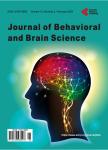版权所有:内蒙古大学图书馆 技术提供:维普资讯• 智图
内蒙古自治区呼和浩特市赛罕区大学西街235号 邮编: 010021

作者机构:Department of Physical Therapy University of Evansville Evansville IN USA Institute of Biomedical Engineering National Cheng Kung University Taiwan Department of Nutrition Sciences College of Nursing & Health Professions & School of Biomedical Engineering Drexel University Philadelphia PA USA Department of Kinesiology & Applied Physiology Biomechanics and Movement Science Program University of Delaware Newark DE USA
出 版 物:《Journal of Behavioral and Brain Science》 (行为与脑科学期刊(英文))
年 卷 期:2016年第6卷第12期
页 面:485-497页
学科分类:0710[理学-生物学] 07[理学] 071006[理学-神经生物学]
主 题:Functional Near-Infrared Spectroscopy (fNIRS) Developmental Changes Resting Conditions Eyes Open (EO) Eyes Closed (EC)
摘 要:The prefrontal cortex (PFC) plays an important role in cognitive process related to executive function, but is also active during resting states. Quantifying prefrontal cortex activity during resting states provides a baseline for interpreting task-induced brain activity. Researchers commonly use resting conditions where participants are prompted to stare at a screen (eyes open) or close their eyes (eyes closed). Are these two conditions equivalent representations of a baseline resting state? Further, does prefrontal cortex activity during these conditions change as a function of development? The aim of this study was to examine differences in prefrontal cortex activity between eyes open and eyes closed conditions during resting states in children and adults to provide a rationale of proper selection of baseline condition in future research. Thirty-six participants in 3 age groups were recruited in this study including twenty-four adults, five 12 - 15 years old children, and seven 8 - 11 years old children. Relative changes in concentrations of oxygenated hemoglobin (Δoxy-Hb) and deoxygenated hemoglobin (Δdeoxy-Hb) were obtained by using functional Near-Infrared Spectroscopy (fNIRS) in eyes closed (EC) and eyes open (EO) conditions, 3 minutes each. Contrasts were tested to compare the differences of Δoxy-Hb and Δdeoxy-Hb between eyes open and eyes closed conditions. The EC condition had significantly higher Δoxy-Hb than EO when all groups were combined (t (17.268) = 3.021, p = .008, Cohen’s d = –0.72). When comparing Δoxy-Hb between eyes conditions within each group, the younger group had significantly higher Δoxy-Hb in EC than EO (t (9.459) = 2.734, p = 0.022, Cohen’s d = –1.46). Based on these results, the EO condition may be a better baseline condition, particularly in studies with younger children, since it has less activity in the PFC that could interfere with interpretations of task-induced activity.